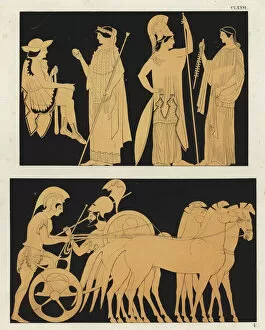Venus De Milo Collection (#6)
The Venus de Milo, a marble statue of Aphrodite of Milos, is one of the most famous and iconic sculptures in the world
For sale as Licensed Images
Choose your image, Select your licence and Download the media
The Venus de Milo, a marble statue of Aphrodite of Milos, is one of the most famous and iconic sculptures in the world. Housed in the Musee du Louvre in Paris, France, this masterpiece represents Greek civilization from around 100 B. C. With her missing arms adding an air of mystery and intrigue, the Venus de Milo captivates visitors from all over Europe who flock to witness her timeless beauty. Standing tall at approximately six feet seven inches, she exudes grace and elegance that transcends time. Inspired by various artistic interpretations throughout history, the influence of Venus can be seen in numerous works. From Edward Coley Burne-Jones' depiction in "The Story of Cupid and Psyche" to Sandro Botticelli's renowned painting "La naissance de Venus, " artists have sought to capture her allure for centuries. Even beyond paintings, other sculptures pay homage to this goddess of love. Tannhauser's oil on canvas piece showcases a different perspective with its vibrant colors and intricate details. Francesco de Rosa's "Venus, a satyr and two lovers" portrays an intimate scene filled with passion and desire. Throughout ancient times until today, Aphrodite has been depicted through various mediums such as marble statues like the Aphrodite of Doidalsas or busts like those found in Boncompagni Ludovisi collection. These artworks continue to inspire awe as they showcase different facets of love and beauty associated with this mythical figure. As you stand before the mesmerizing Venus de Milo at Musee du Louvre or explore other artistic renditions across Europe, you cannot help but feel drawn into her captivating presence. She remains an eternal symbol that embodies love's power while reminding us that true beauty knows no boundaries - not even time itself.























